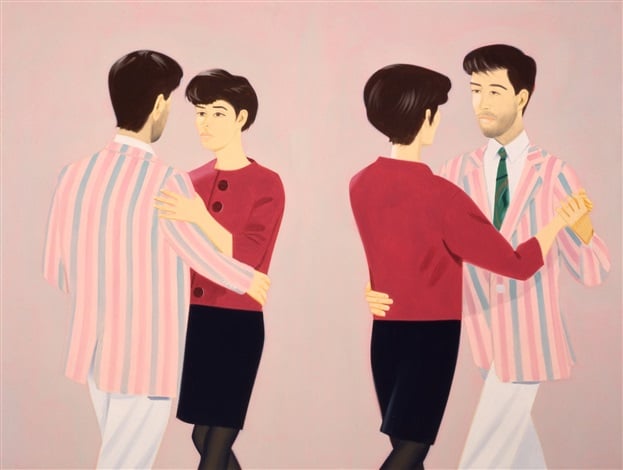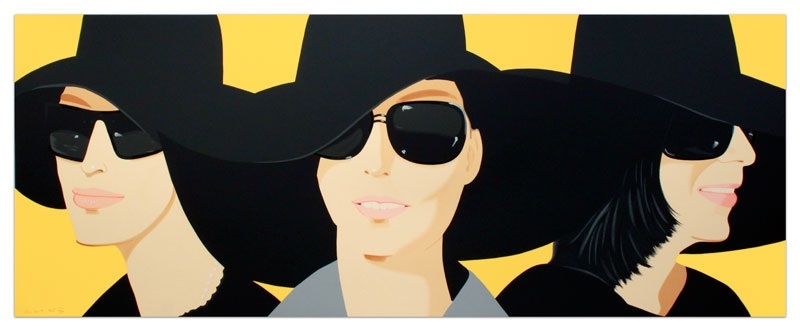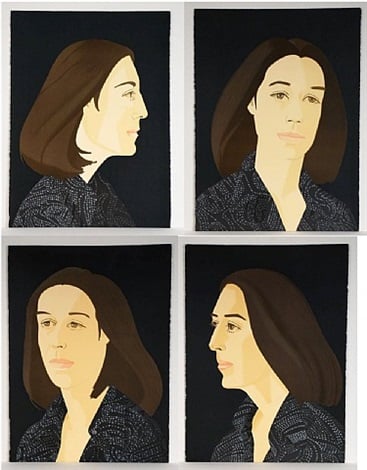People
Alex Katz’s Simple Paintings Were Rejected at First
When Alex Katz first exhibited his work, people did not exactly appreciate it.

Photo: courtesy Galerie Thaddaeus Ropac
When Alex Katz first exhibited his work, people did not exactly appreciate it.

Amah-Rose Abrams


Alex Katz, Black Hat IV (2011). Courtesy of Peach Editions.
When Alex Katz first began exhibiting his elegantly stylized canvases, audiences rejected his representational efforts that clashed with the Abstract Expressionism dominating the conversation of the day. Today, however, he is revered as a uniquely innovative figure in painting, and is often credited with paving the way for Pop Art. How did this American artist go from one extreme to the other?
Katz’s work marks a turning point in American art, straddling the moment when the gestural and emotive work of the Abstract Expressionists gave way to graphic irony of Pop Art. Focusing on the surface of his paintings and maintaining a uniformly flat texture, Katz’s work can seem cartoonish at first glance. The lack of tone and the reductive use of line in his paintings have at times been called amateurish, with some critics calling for the artist to head back to art school.
The young Katz did indeed study at Cooper Union in New York from 1946 to 1949, and then attended the Skowhegan School of Painting and Sculpture over the summer in Maine. Cooper Union provided Katz with the theory of painting and a dedicated network of colleagues, while Skowhegan was where Katz first painted from observation, and showed the young artist a life far outside anything he had experience in New York City. Out in the countryside of Maine, he blossomed.

Alex Katz Roof (1989). Courtesy Galerie Thaddaeus Ropac
“I thought to be an artist you had to be a genius or something,” Katz told artnet News in 2015. “It was that 19th-century idea and I knew I wasn’t a genius. I didn’t have too much talent, but with hard work I got to be good at that.”
Katz’s first exhibition was held at the Roko Gallery in New York in 1954, and it was during this time that he was socializing with other important artists of the day, like Larry Rivers and Fairfield Porter, and the poet Frank O’Hara.
In terms of composition, Katz paintings have deceptive appearance of simplicity and modesty. But, as with most great painters, there is a delicate visual balance achieved in his work. During the 1950s, the artist began to use monochrome backgrounds in his work and also began to focus on portraiture, creating large-scale canvases with a strong focus on line and brushstroke.

Alex Katz Sara (2012). Courtesy Nikola Rukaj Gallery
“Everything in paint that’s representational is false because it’s not representational, it’s paint,” Katz explained to David Sylvester in 1997. “We speak different languages and have different syntax. The way I paint, realistic is out of abstract painting as opposed to abstract style. So I use a line, a form, and a color. So my contention is that my paintings are as realistic as Rembrandt’s. Now, that’s supposed to be realistic, but I don’t see those dark things around it, I don’t see those dark things anywhere. It was realistic painting in its time. For an artist, this is the highest thing an artist can do—to make something that’s real for his time, where he lives. ”
Though he has had many female muses throughout his career, his wife, Ada Del Moro Katz, remains one of his favorite subjects and greatest sources of inspiration. The couple married in 1958 and had one son, Vincent Katz, who was born in 1960. Katz has also featured his grandsons Isaac and Oliver as subjects in his paintings, as well as regularly depicted his circle of friends and family.

Alex Katz, Ada Four Times (Suite of four prints, sold as a set), (1978–1979). Courtesy Sragow Gallery.
In the 1960s and 70s, Katz began to incorporate images from advertising and magazine editorials, signaling a shift of interest to the commercial world that predated Pop Art. His compositions grew gradually more complex, featuring of groups of party-goers, dancers, and models in designer clothing on monochrome backgrounds. He also expanded his practice to include collage and printmaking, and experimented with free-standing, shaped paintings.

Alex Katz, Untitled (2011). Courtesy Galerie Thaddaeus Ropac.
In 1974, he was the subject of a major retrospective at the Whitney Museum of American Art, “Alec Katz Prints,” which was followed by an exhibition of paintings and cut-outs titled simply “Alex Katz” in 1986. It was during the 1980s and 90s that—although he continued his focus portraiture—that Katz began to make more landscape and floral paintings. These increasingly large-scale works have an even greater abstract quality, featuring floral patterns devoid of context or landscapes that are reduced to the point of being unrecognizable.

Alex Katz, Möwe (2010). Courtesy of Galerie Thalberg.
Over the course of his lengthy and prolific career, Katz has participated in over 500 group exhibitions and held 200 solo shows around the world, and is currently represented by Gavin Brown’s enterprise in New York, Galerie Thaddeaus Ropac in Paris and Saltzburg, and Timothy Taylor Gallery in London. His popularity and influence has only continued to increase, and despite his magnanimous importance to contemporary painters he quietly returns to Maine each summer, continuing to paint its coast and forest while maintaining a residence in New York, sticking to his practice as the tides of art has continued to turn.